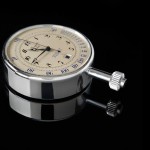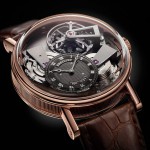Insight: Breguet’s New Sympathique Clock and Natural Escapement
The scoop on possibly the flagship anniversary launch.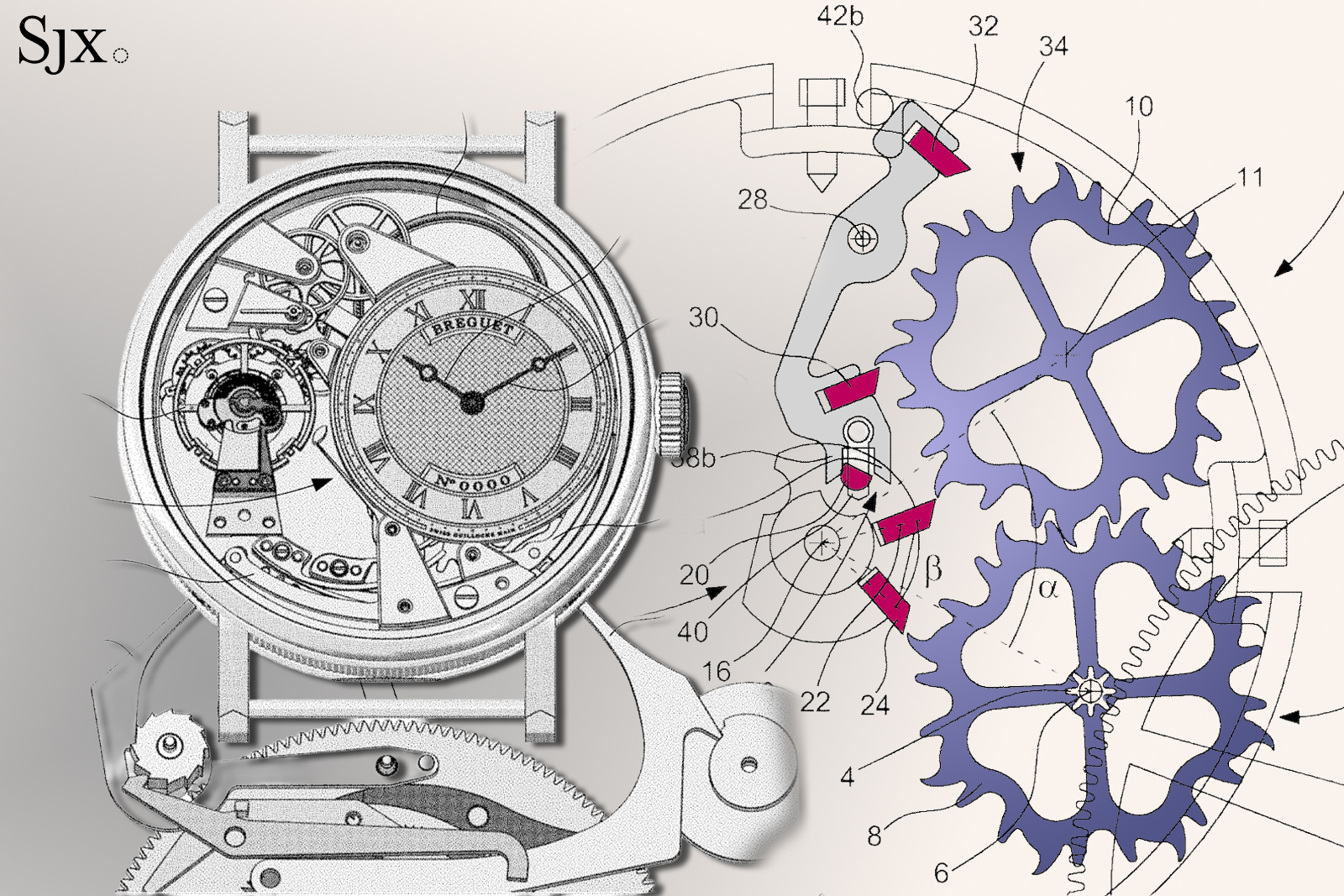
Breguet will very likely close its 250th anniversary this year with a bang: launching a 21st century Sympathique as a tribute to perhaps Abraham-Louis Breguet’s greatest invention, a clock that could autonomously wind, correct, and regulate a removable watch.
While the brand has released no details, and there haven’t been any leaks, a series of patents gives us a peek at the new Sympathique. Notably, the patent drawings illustrate two possible companion watches: a 60 m water resistant Marine tourbillon and a Tradition. The latter is more interesting as it uses a novel form of Breguet’s échappement naturel, or natural escapement.
We explain both the new Sympathique 2025 and the natural escapement using information gleaned from Breguet’s patents.
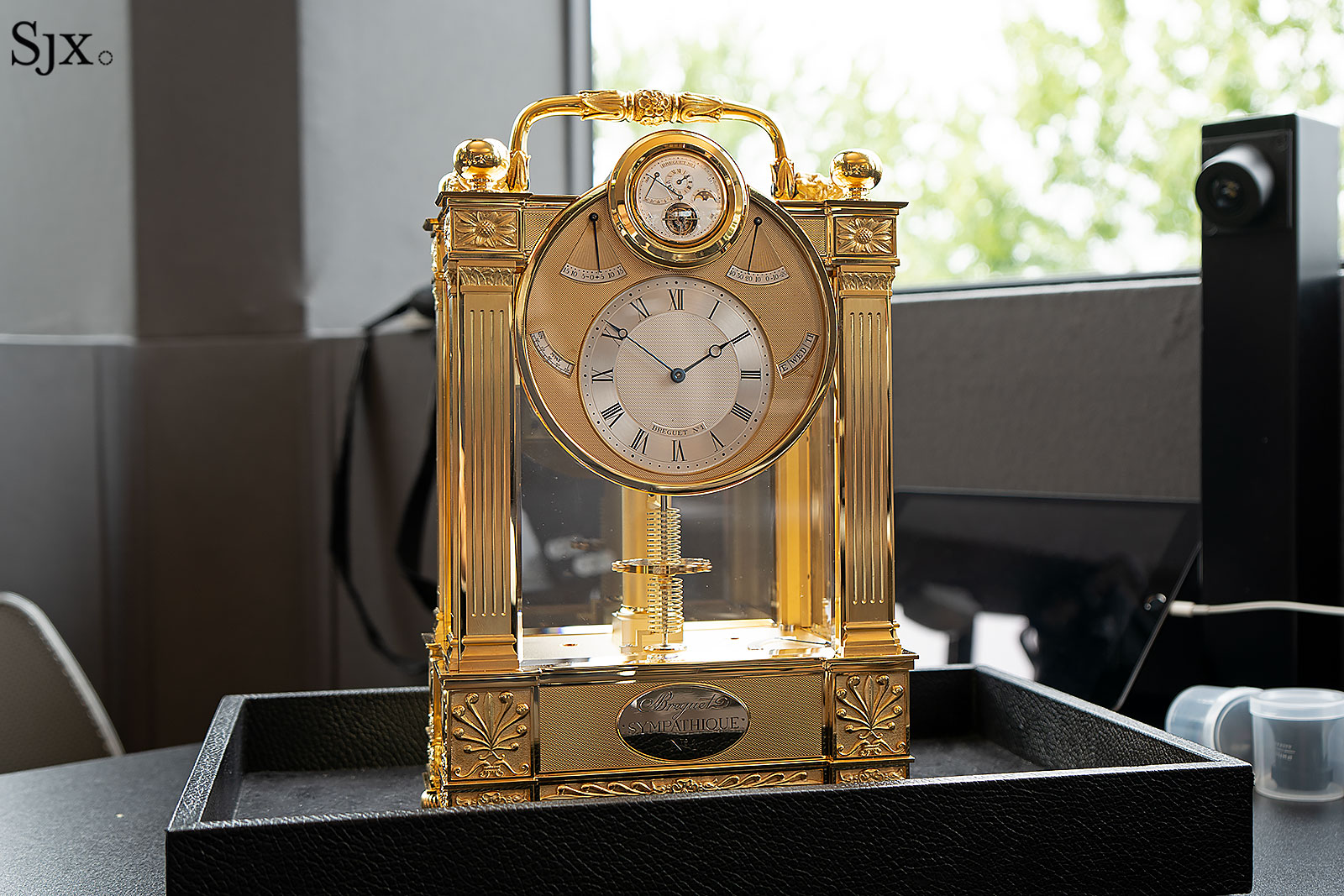
Breguet Sympathique No. 1 by Francois-Paul Journe
Initial Thoughts
Three of the most historied names in the watch industry are celebrating anniversaries this year. Vacheron Constantin marked the occasion with Solaria, the most complicated wristwatch to date, while Audemars Piguet introduced an all-new Royal Oak Perpetual Calendar (and promises more to come in the fall).
In comparison, Breguet has debuted the Classique Souscription and Tourbillon Sidéral so far, both of which are objectively good watches but feel underwhelming in technical terms. A new Sympathique, on the other hand, would be the ideal centrepiece for the brand’s anniversary collection, being visually impressive, an icon of the brand, and entirely unique in the current market.
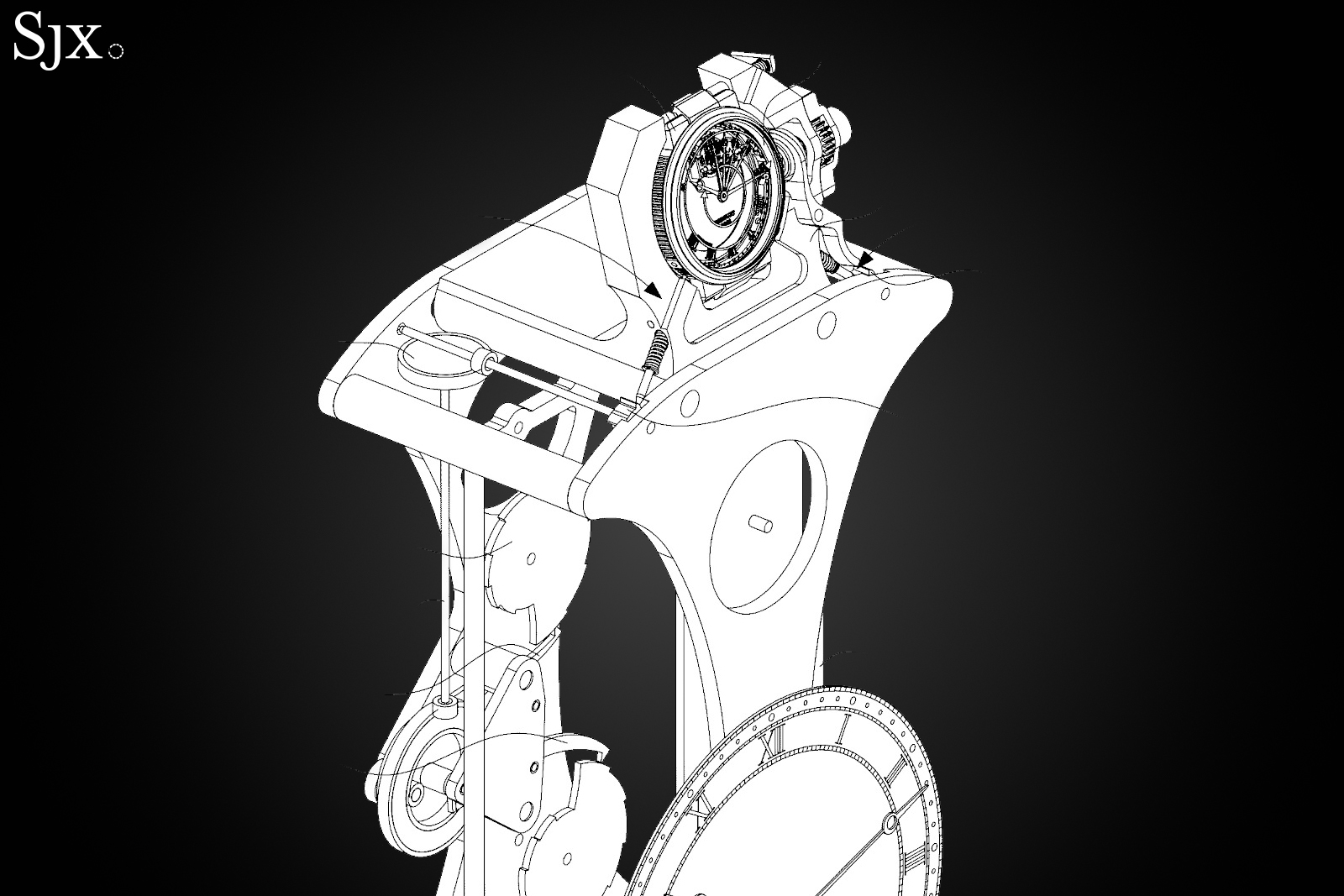
A drawing from Breguet’s Swiss patent CH717698A1
Of all A.-L. Breguet’s creations, the Sympathique was the most ambitious. The principle of the Sympathique was a simple one: the wearer would install his watch into the clock at night, and while he slept, the clock would wind, set, and regulate the watch, making it ready for use the next day. The execution of the concept, however, was exceptionally difficult and complex.
A.-L. Breguet’s firm on managed to deliver only eight Sympathique clocks during his lifetime, and not all with companion watches – the company completed five times as many tourbillions in the same period. Today, by combining the Sympathique with a natural escapement (another idea A.-L. Breguet struggled to realise during his lifetime), the modern-day Breguet firm is symbolically completing the master’s great unfinished works.
A key figure in realising the modern-day Sympathique clock is Alain Zaugg, the longtime head of Breguet’s technical development department who retired in 2021; his name is on all the related patents.
The small-correction approach
Historical Sympathique clocks cannot perform large time corrections, instead these clocks can only maintain a running watch by moving the time a short distance to the current time, and are unable to set a stopped or wildly inaccurate watch from scratch.
This small-correction approach is a limitation, but makes autonomous regulation possible, as a pair of pawls attached to the minute hand adjust the rate proportionate to distance and direction of the correction. A Sympathique corrects a very fast watch by moving the time significantly backwards, which simultaneously retards the rate substantially, and when correcting a slightly slow watch by adjusting the time forward, it will slightly advance the rate.
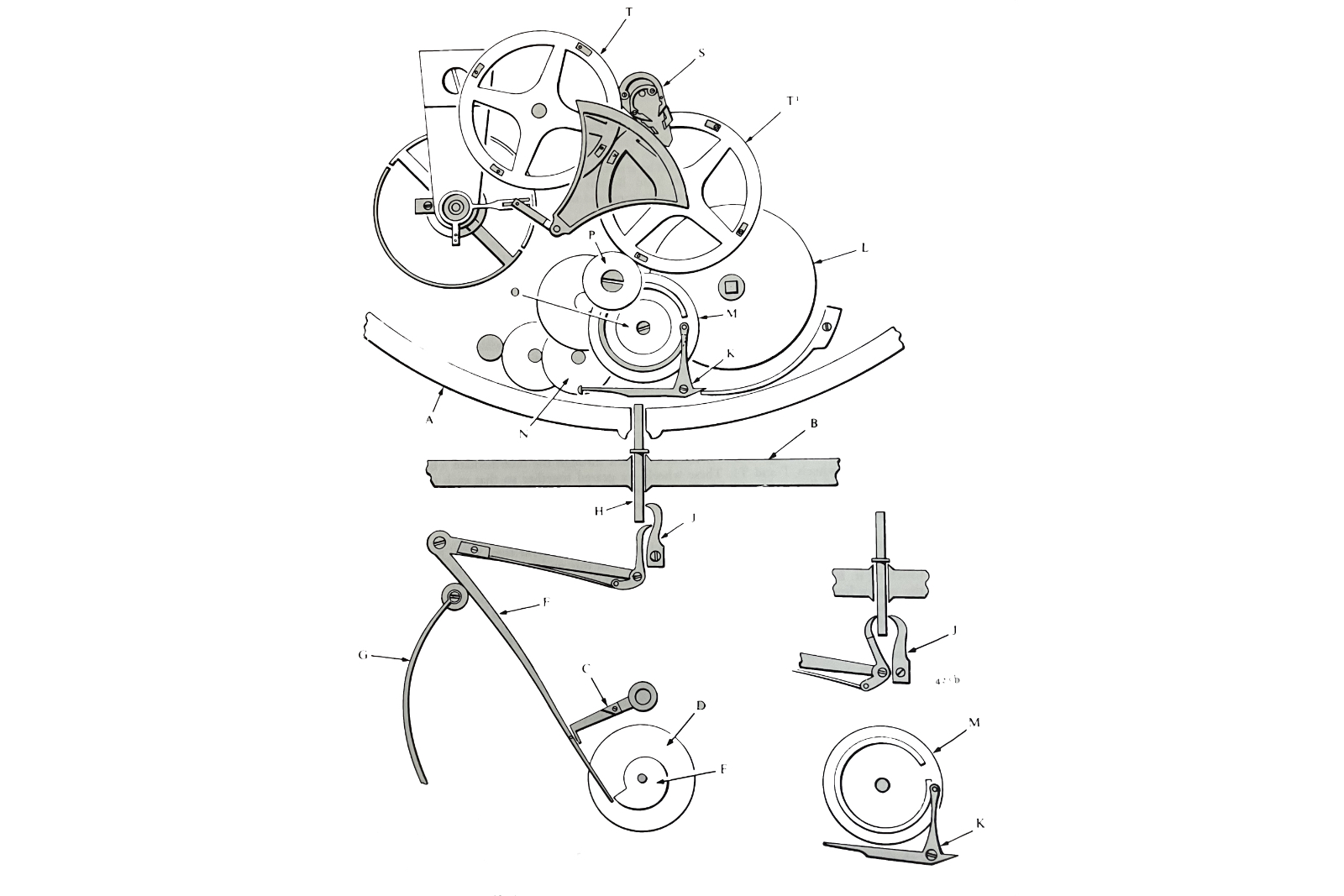
Setting and regulating of watch No. 2787 associated with clock No. 430 (page 352). Image – The Art of Breguet
Sympathique no. 128, made for the Duc d’Orléans and the most valuable Sympathique clock ever made, is very different. Rather than making minor corrections at regular intervals, the watch is automatically set to three 0’clock at that time in the morning.
This approach precludes automatic regulation, but as George Daniels (who restored the clock and watch) points out in The Art of Breguet, regulation isn’t needed “[as] this is a precision watch the parent clock does not move the regulator, as was done with the earlier type of Sympathique watch, which had no temperature compensation”.

Perhaps the most storied historical Sympathique, the example made for the Duc d’Orleans in 1835. Image – Sotheby’s
While the modern Sympathique has the same goals as those built under A.-L. Breguet, it goes about it entirely differently, resulting in it being the most polished and capable such clock yet.
The modern-day Sympathique illustrated in the patents goes even further, first resetting the watch and then adjusting it to match the current time. The innovations fix some of the shortcomings of its historical counterpart: the clock will probably be able to set the time automatically or on demand, and the automatic setting interval will probably be adjustable (and even disabled at will), though details on those functions are still hazy.
The new system shifts most of the time setting equipment to the clock – reminiscent of Louis Raby’s approach in Sympathique no. 5 – leaving the accompanying watch more similar to a chronograph controlled by the clock than anything else. The clock is essentially a trip-repeater set to trigger at a predetermined time, not unlike the alarm in Patek Philippe’s Grandmaster Chime.
The patent drawings depict the clock with a tourbillon, possibly a reference to A.-L. Breguet’s tourbillon carriage clock no. 780. If the drawings accurately represent the final product, the new Sympathique be a contemporary design entirely unlike any before, which is welcome. I hope there will be as much design diversity at Breguet in the future as in the past. Ideally that diversity would include an ecosystem of inter-compatible Sympathique clocks and watches.
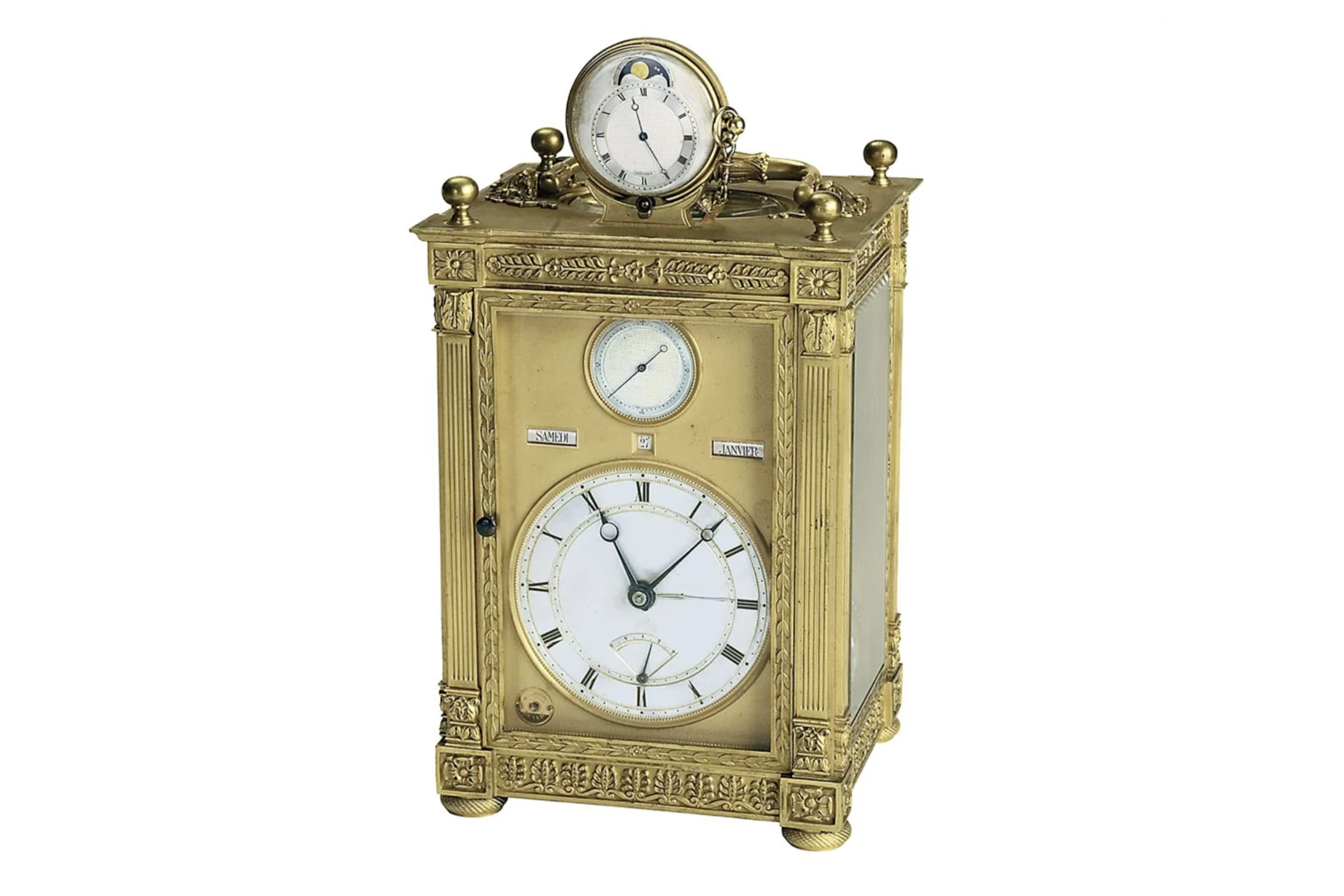
Sympathique No. 5 made by Louis Raby in collaboration with Breguet. Image – Museum of Islamic Art, Jerusalem
The control mechanism
The wristwatch sits inside a cradle at the very top of the clock, as is convention for the Sympathique. While the patent drawings show the watch without a strap for clarity, the strap doesn’t need to be removed, unlike the small run of Sympathique clocks made by Breguet made in the 1990s that were developed by Francois-Paul Journe and then produced by Techniques Horlogères Appliquées (THA).
Within the cradle, the clock winds the wristwatch through its crown, and sets the time using a pair of actuators, similar to a stylus used to correct the date on a perpetual calendar.
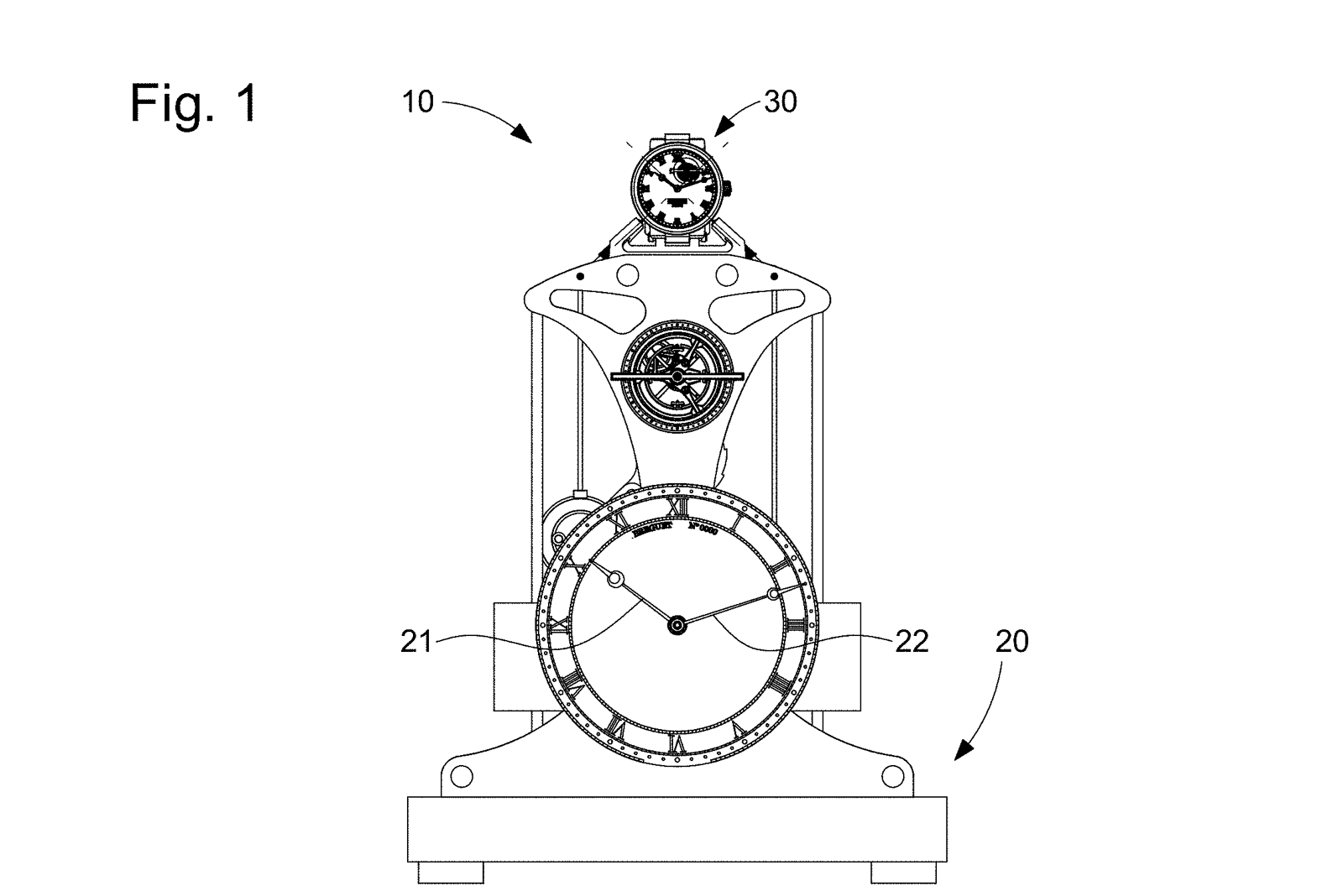
Image – EP4202575B1
A counter-clockwise rotating cam (yellow) is locked by a lever (magenta). During time setting this lever releases the cam, which turns, pushing the first actuator (orange) all the way in to the first position, which stops the watch and resets the hands to 12:00:00. The watch remains stopped when the actuator drops out halfway into a second position, where the cam is locked by a second lever (black) allowing a second actuator (purple) to set the time.
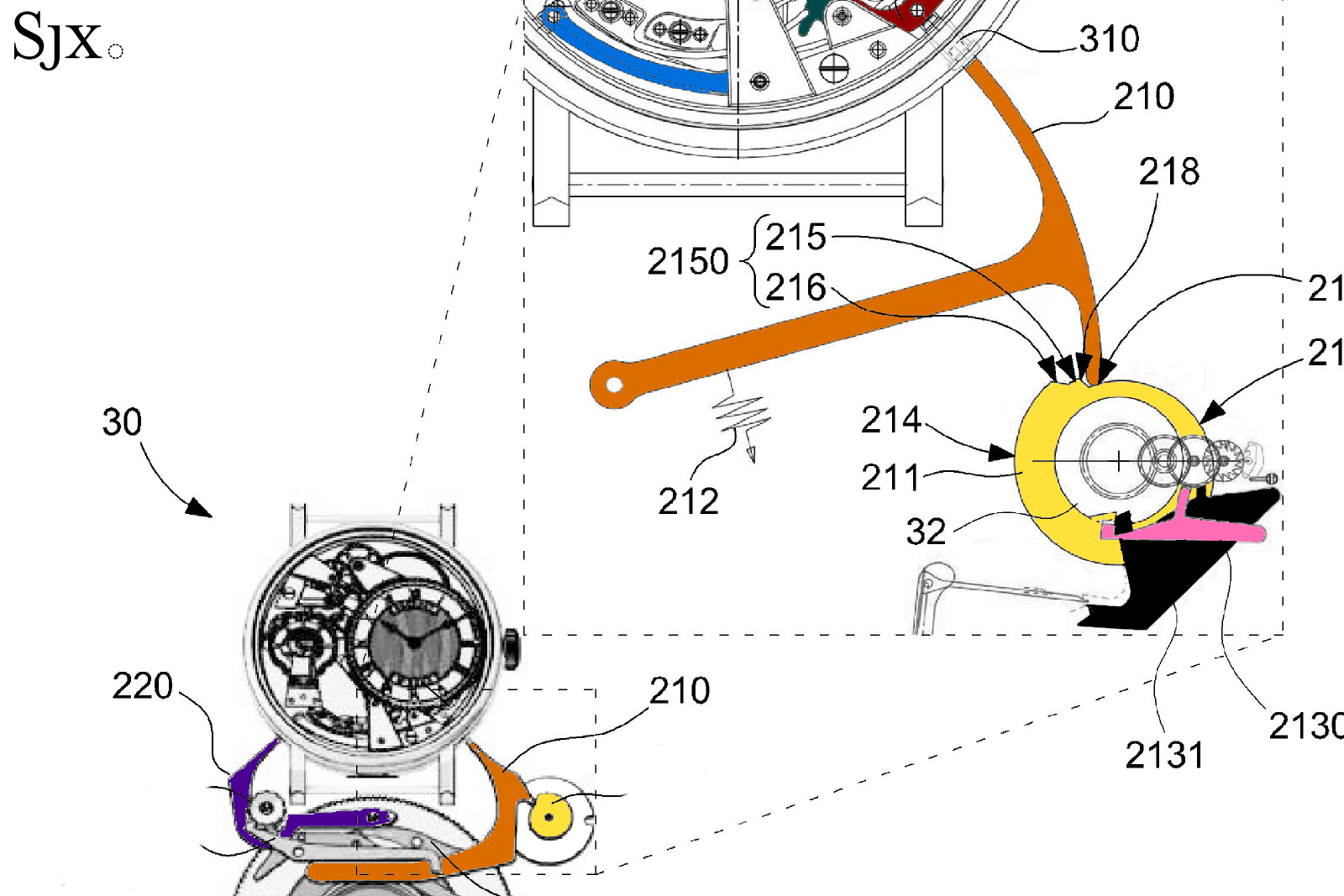
Image – EP4202575B1
Since time setting is not instantaneous, the clock sets the watch slightly into the future, such as the next five-minute increment. Once the clock reaches that time, the second lever (black) unlocks the cam (yellow) which finishes a full 360° rotation, causing the first actuator (orange) to retract and the watch starts with the correct time.
Time setting
Now, we are going to go through the process again, but from inside the watch. A heart-shaped cam (brown) on the hour wheel and hammer (teal) reset the hours and minutes to 12:00, just like the reset of a chronograph. A vertical clutch (pincers in light blue) disconnects the hands from the rest of the movement just before reset. This means the reset and setting systems won’t need to fight friction from the canon pinion. The first actuator controls all these actions by moving the control lever (red).
When the first actuator (orange) pulls back halfway, into the second position, the control lever (red) pushes the motion-works hammer away while the combined seconds reset hammer and hacking lever (purple) stay in place, and a lightly tensioned jumper spring (pink) holds the motion works steady. Then the yellow control cam is locked in place, and time setting begins.
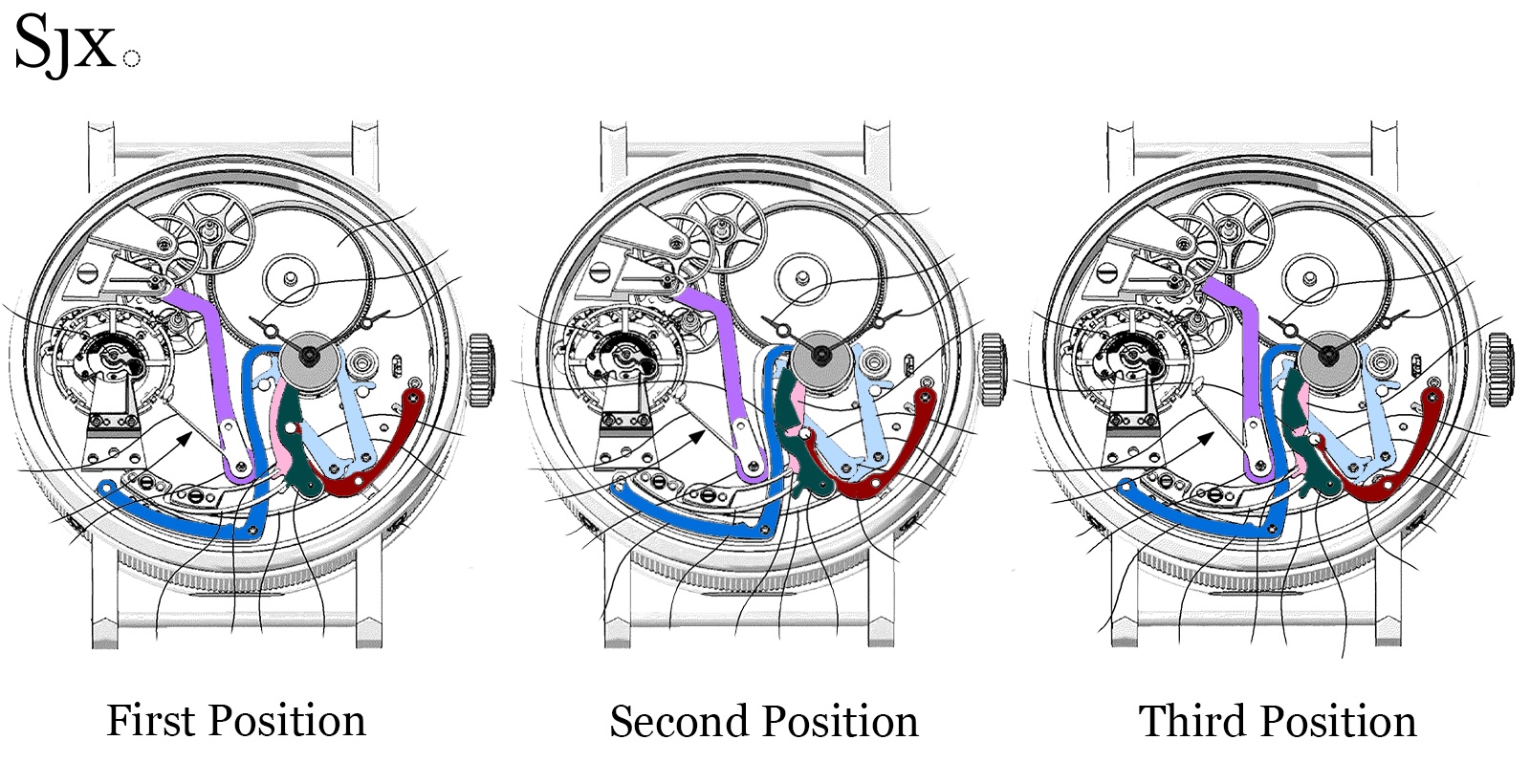
Image – EP4202575B1
The second actuator controls a jumper (blue). Each step advances the time forward by five-minute increments, similar to how the hour hand jumps in some travel time watches. Since this is done in discrete steps, static friction would again be an issue if not for that vertical clutch.
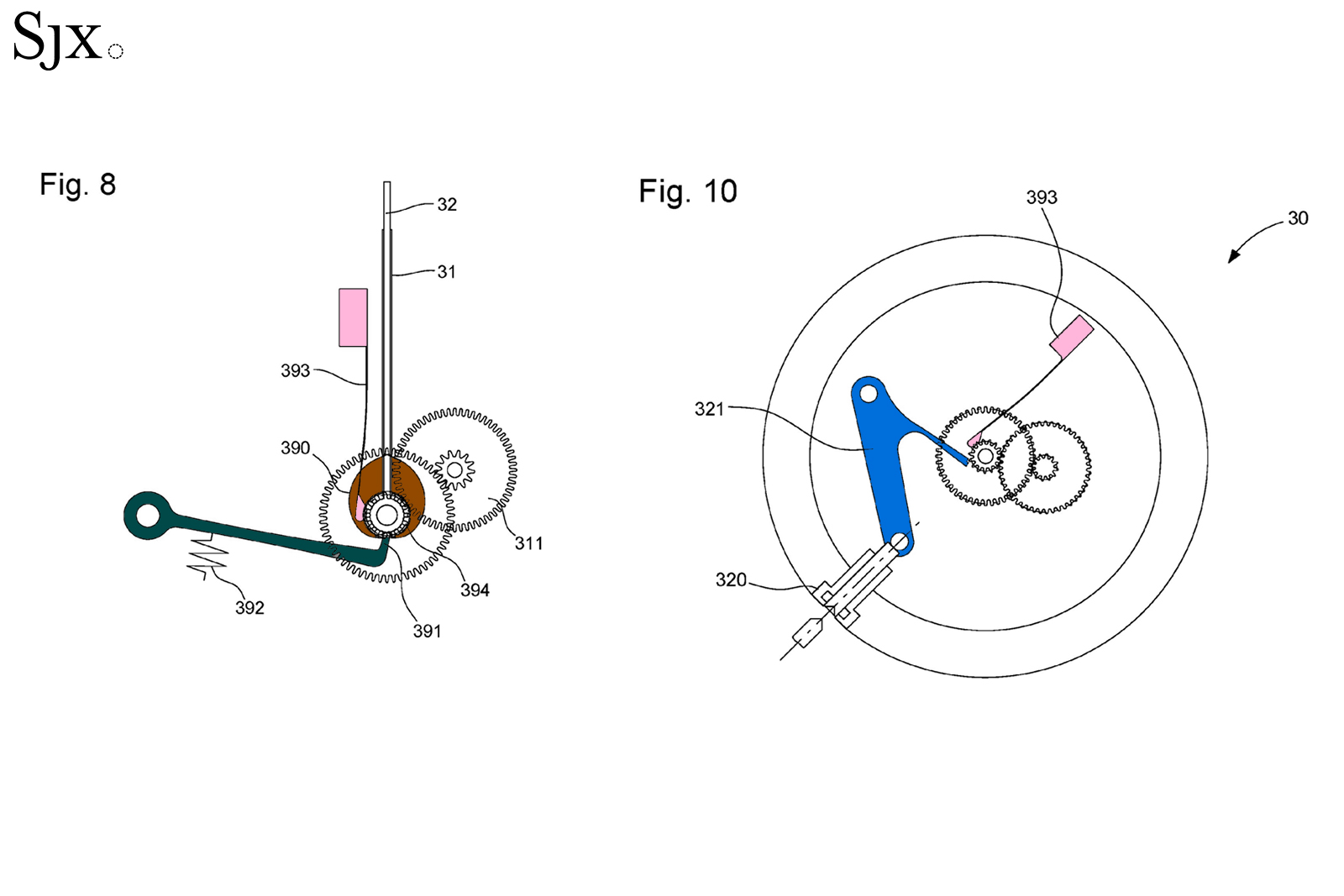
Image – EP4202575B1
(To explain time setting, I’ve used a simplified drawing from a related patent. A rack and snail-cam system reads the clock’s time and then transmits it to the watch. This is the same mechanism used by chiming clocks and repeaters. Another, more complex implementation – not covered here – uses two small snail cams rather than one large snail cam. In this implementation, if a 15-minute time setting resolution is acceptable, the clock could use the same cams for a grande ou petite sonnerie or quarter repeater to set the watch.)
In this case, a single massive cam – which rotates once in 12-hours – is divided into 144 steps, with each step representing five minutes. The rack (dark grey) falls onto the snail (gold) and is pulled back to its starting position. This passes through a differential (dark teal), and a shaft (magenta) transmits this motion to a four-pointed star (lime), which pushes the second actuator to advance the time.
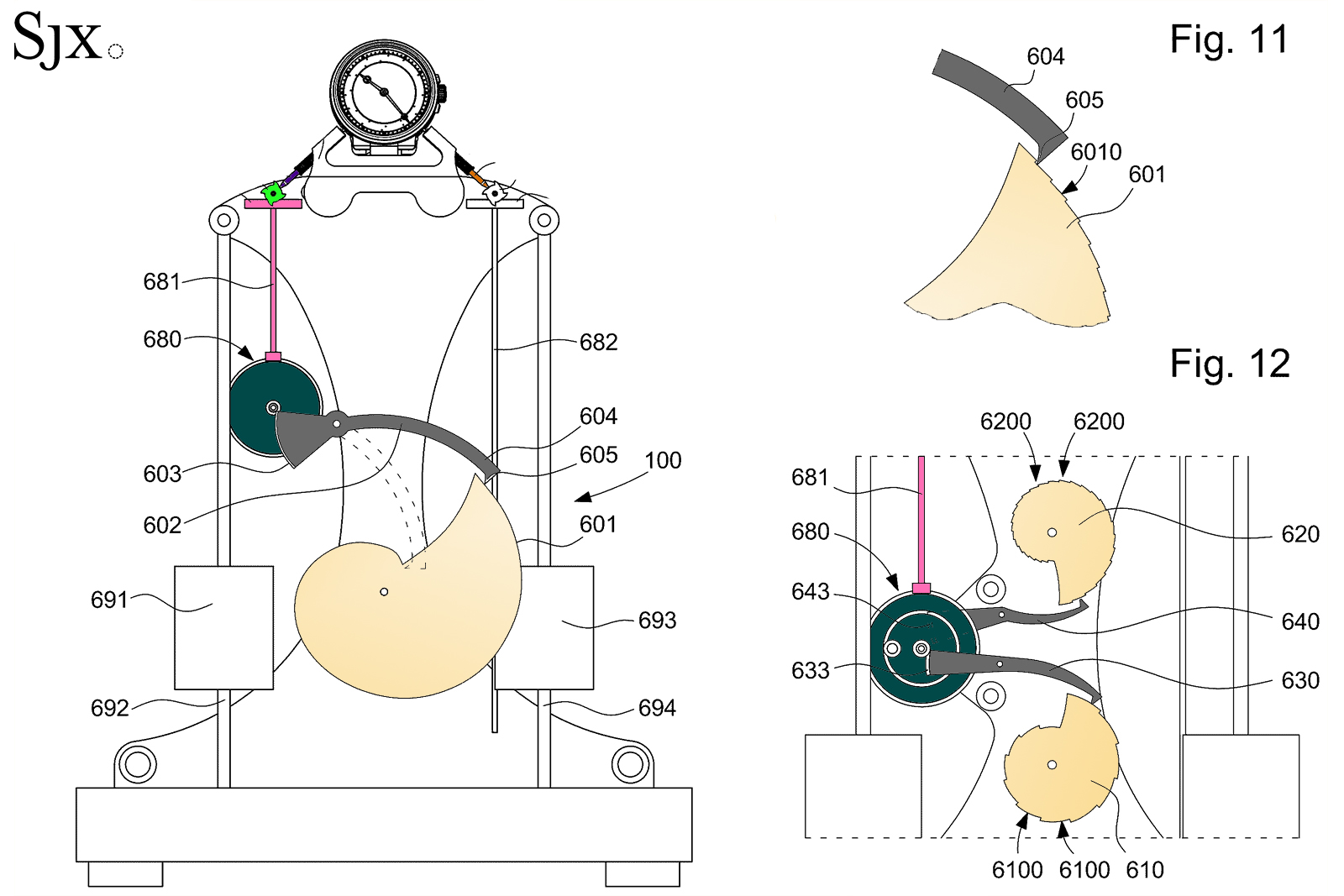
Image – CH717698A1
The further the rack falls, the more times the second actuator is pushed, with the highest point on the cam being zero actuations (12:00) and the lowest point being 143 actuations (11:55). Naturally, a similar system could set a date on the watch from a perpetual calendar on the clock, which is also claimed in the patent.
A New Escapement
Similar to the Rolex Dynapulse or Ulysse Nardin Dual Ulysse escapement, the two escape wheels are geared together on a single level using specially designed toothing – while not explicitly claimed in the patent, the escape wheels will almost certainly be silicon. However, unlike the Rolex and Ulysse Nardin escapements that use an intermediate lever, this is a true natural escapement with direct impulse, as the escape wheels directly impulse the balance.
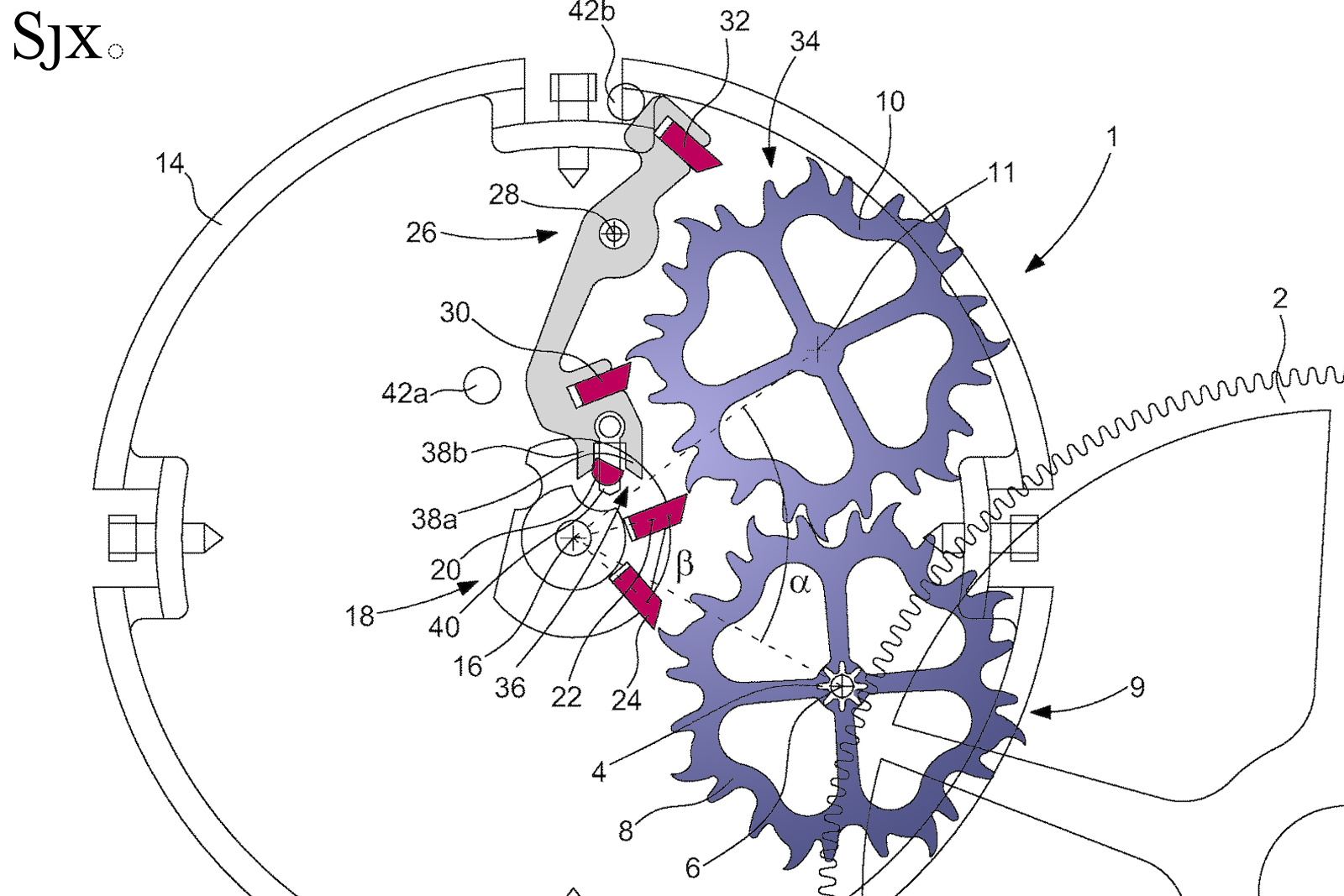
Image – EP4053643B1
In theory, energy transfer should be more efficient in a natural escapement than in escapements using an intermediate lever. There is also very little sliding action, reducing friction to a minimum.
The balance carries a pin which pivots an anchor back and forth, locking and unlocking the escapement, similar to a lever escapement. The locking lever sits on the same plane as the escape wheels, as opposed to above as seen in those made by A.-L. Breguet, likely reducing the system’s height.
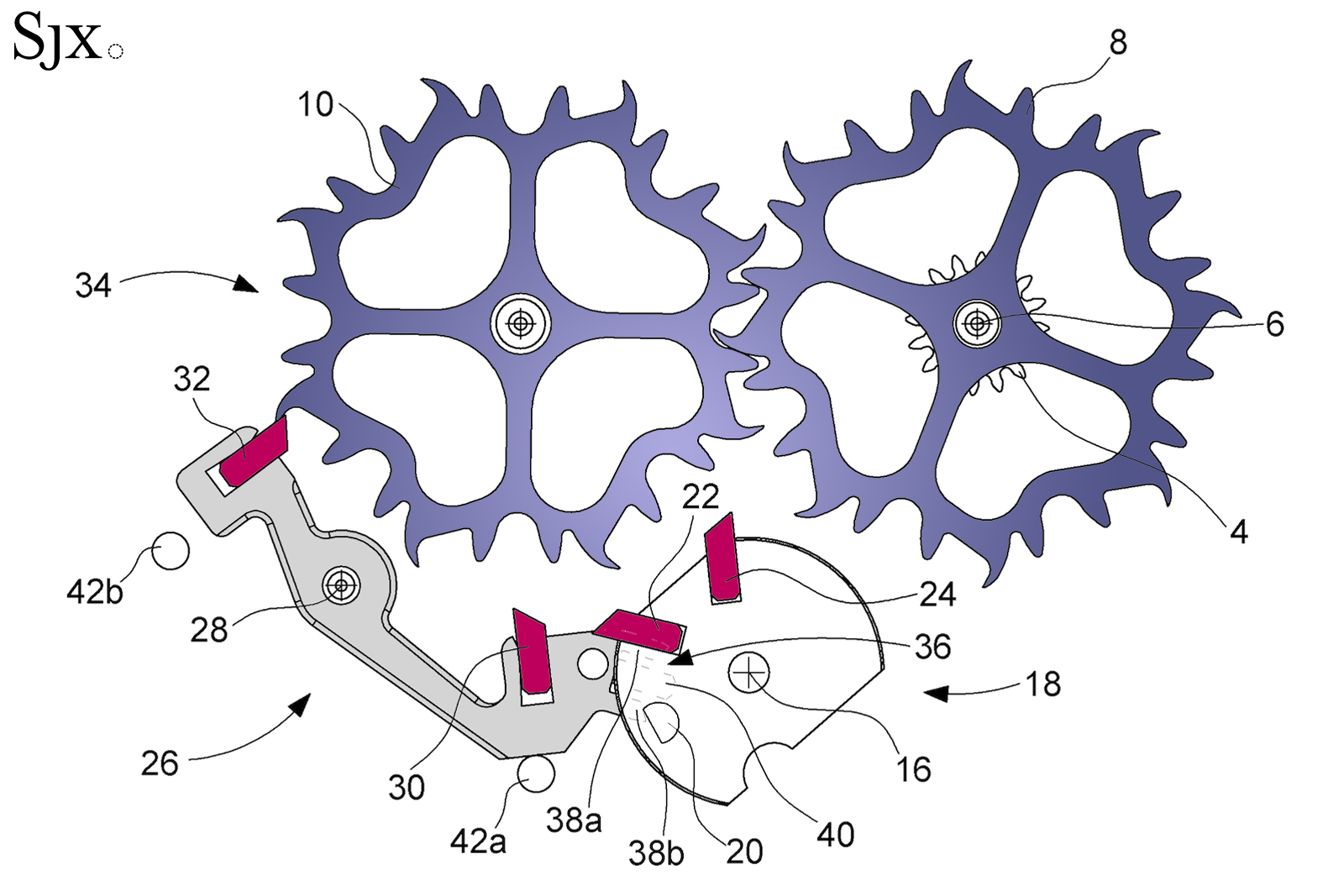
Image – EP4053643B1
This would be Breguet’s first foray into alternative escapement designs since its experimental detent escapement that debuted in 2005 but never made it to market – a reminder that patented inventions are not always viable for commercialisation. That said, I believe this time will be different, and we will finally see a fully realised Sympathique closer to the end of the year when Breguet’s 250th anniversary celebration reaches its high point.
Back to top.




